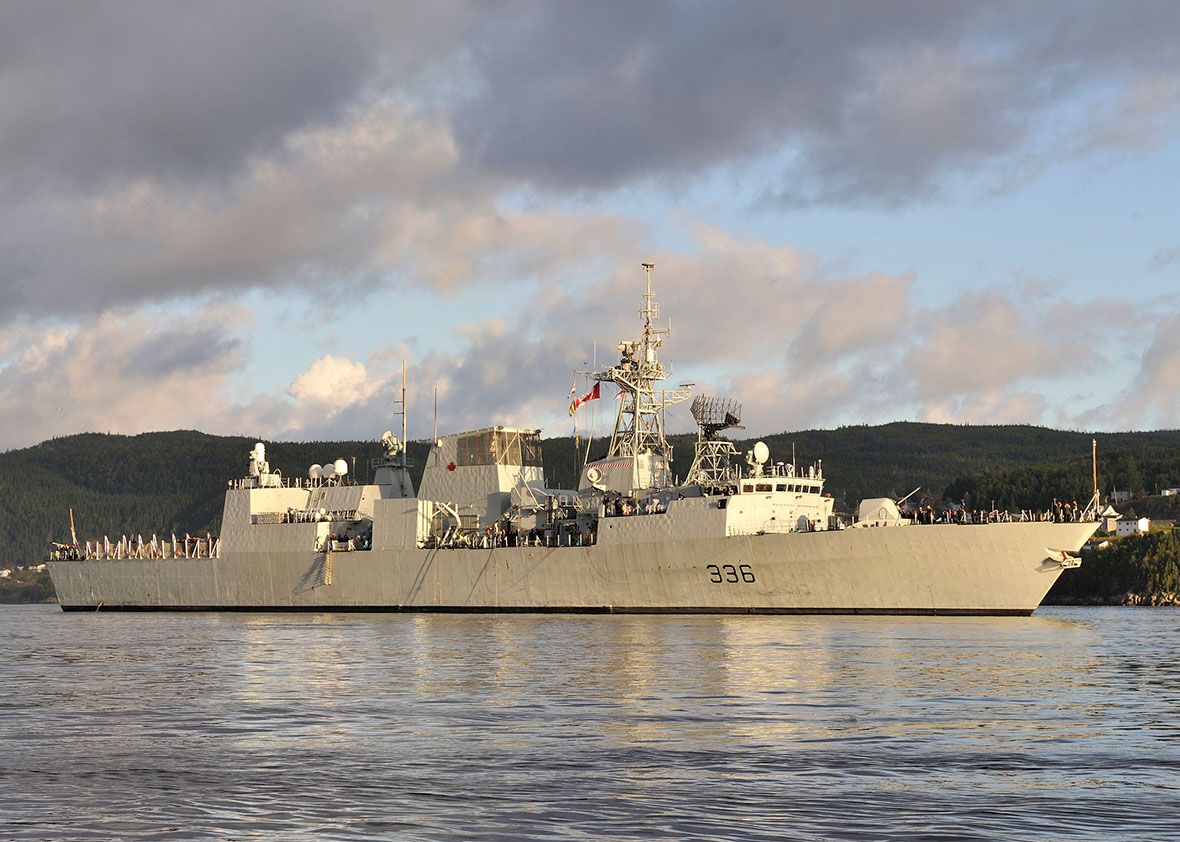HMCS Montréal
There have been 3 units named HMCS Montréal in the Royal Canadian Navy.
HMCS Montréal (1st of the name)/Naval Reserve Division
Two Half-Companies of the Royal Canadian Naval Volunteer Reserve (RCNVR), with 50 officers and sailors each, were established in Montreal, QC, on June 28, 1923. They were named the Montréal (English) Half-Company and the Montreal (French) Half-Company, RCNVR. This was often shortened to Montreal “E” and “F” Half-Companies before it was changed to “A” and “B” Half-Companies in January 1927. In 1928, they were amalgamated as the Montreal Company, RCNVR, before becoming the Montreal Division in 1935.
The separation along language lines would be reintroduced in June 1939, when the Francophone Cartier Division was established. On November 1, 1941, it would be commissioned as HMCS Cartier, and at the same time the Anglophone Montreal Division would be commissioned as HMCS Montréal. The Anglophone unit would go through one more name change in 1943 and become HMCS Donnacona so that the name “Montréal” could be used for the newly built River-class frigate. At the end of the Second World War, we would see a reorganization of the Naval Reserves in Canada. On September 15, 1945, HMCS Cartier would be paid off and merged with HMCS Donnacona.
HMCS Montréal (2nd of the name)(K319)
Commissioned on November 12, 1943, at Montréal, Quebec, the River Class frigate HMCS Montréal arrived at Halifax, Nova Scotia, on November, 29 worked up locally and on February 25 left St. John’s, Newfoundland, for Londonderry, Northern Ireland. She was employed continuously on convoy duty until late September 1944. On December 17, 1944, she rescued survivors of the submarine U-1209 wrecked southwest of Land’s End, England. HMCS Montréal remained in United Kingdom waters and left Londonderry for the last time on March 12, 1945. Arriving at Shelburne, Nova Scotia, on March 31, she completed a refit there at the end of August, then performed odd jobs out of Halifax until paid off October 15 to reserve in Bedford Basin. Sold in 1947, she was broken up at Sydney.
HMCS Montréal (3rd of the name)(336)
The Halifax Class frigate HMCS Montréal was commissioned at Montreal on July 21, 1994, and designated a French Language Unit. On January 4, 1995, she sailed from Halifax to join the North Atlantic Treaty Organization’s (NATO) Standing Naval Force Atlantic in the Adriatic Sea, blockading the former Yugoslavia. On August 10, 1998, she departed Halifax to join the NATO fleet off Florida and paid an historic visit to St.Petersburg, Russia, to celebrate the 300th Anniversary of the Russian Navy. In 2000, she represented Canada in the Millennium International Fleet Review in New York City, and then escorted the Tall Ships to Halifax. In 2002, she underwent a refit and afterwards deployed on Operation APOLLO, the Canadian effort to support the international campaign against terrorism. In 2003, in an initiative with the Dutch Navy, she tested the Sirius sensor, a new technology capable of detecting and tracking small surface targets, low flying aircraft and anti-ship missiles. In 2004, she participated in Fisheries and Oceans operations, an international and a national exercise that saw her cross the Arctic Circle. In 2005, the ship conducted a 6-month deployment to Europe in which she deployed to the Netherlands on exercise, then joined Operation ACTIVE ENDEAVOUR patrolling the Mediterranean to help detect, deter and protect against terrorist activity by monitoring shipping and providing escort to non-military vessels through the Straits of Gibraltar. In 2006, she participated in Operation CARIBBEAN LION as well as an exercise in northern Canada carried out in order to ensure sovereignty in the Baffin region. She continues to support Canada’s domestic and international objectives and is stationed in Halifax.
Motto: Ton bras sait porter l’épée (We stand on guard for Thee)
Battle honours
Atlantic 1944-1945


